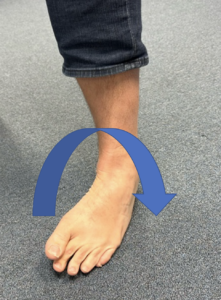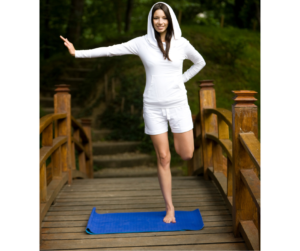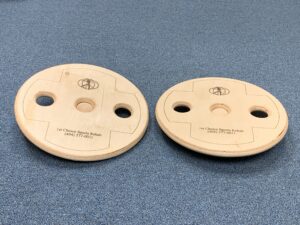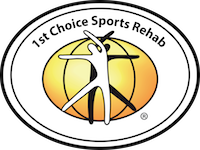 One of the leading injuries we see in our practice is ankle sprains. This injury occurs both with our elite athletes as well as our non-athletic patients. The most common ankle sprain is called an inversion sprain. This injury occurs when the foot rolls in and our body weight loads the outside of the foot. This movement frequently strains the muscles along the outside of our lower leg as well as stretching out some of the important ligaments that holds the bones of the foot together. Unfortunately, ligaments heal very slowly and once stretched they do not provide the same amount of support as they once did.
One of the leading injuries we see in our practice is ankle sprains. This injury occurs both with our elite athletes as well as our non-athletic patients. The most common ankle sprain is called an inversion sprain. This injury occurs when the foot rolls in and our body weight loads the outside of the foot. This movement frequently strains the muscles along the outside of our lower leg as well as stretching out some of the important ligaments that holds the bones of the foot together. Unfortunately, ligaments heal very slowly and once stretched they do not provide the same amount of support as they once did.
Ankle sprains often result in acute symptoms of pain, swelling, bruising, and possible fracture. A symptom that frequently goes unnoticed/untreated and is probably the most common reason for re-injury and prolonged symptoms is loss of proprioception. Proprioception is the bodies awareness of itself in regard to position and movement. A key component of proprioception system are small sensors in the bottom of our foot called mechanoreceptors. The goal of these sensors is to send signals to the central nervous system, so it knows what the limb is doing and how it needs to coordinate movement. When an ankle is rolled, this system gets damaged and the central nervous system gets reduced information from the foot, pain lingers and the person is at a much greater risk of rolling the ankle again.
Like any system in the body, if it is not challenged or used often, it becomes deconditioned or less effective. When you look at how we move most days, the proprioceptive system in our bodies is very rarely challenged. We wear supportive shoes that do a lot of the work that the foot would typically have to do on its own. The surfaces we walk on are flat, man-made surfaces like hallways and sidewalks. Between the footwear that does much of the stabilizing and the flat surfaces we walk on, the proprioceptive system is not being challenged, so it gets lazy.
An easy test can be performed to see how your proprioceptive system is working. Stand on one leg barefoot and look straight ahead. If this is easy for you, then try to stand with your eyes closed. Our bodies utilize the inner ear, our eyes, and the mechanoreceptors in our feet to provide balance. Many of us depend mostly on our eyes to help maintain balance. When you close your eyes in a single leg stance, the body must rely on the inner ear and the mechanoreceptors in the bottom of your foot to find balance. Simply performing this exercise multiple times, a day can greatly increase one’s proprioception/balance. If you have recently sprained your ankle, try these two positions and you will likely find the recently injured side will be much more challenging.
ahead. If this is easy for you, then try to stand with your eyes closed. Our bodies utilize the inner ear, our eyes, and the mechanoreceptors in our feet to provide balance. Many of us depend mostly on our eyes to help maintain balance. When you close your eyes in a single leg stance, the body must rely on the inner ear and the mechanoreceptors in the bottom of your foot to find balance. Simply performing this exercise multiple times, a day can greatly increase one’s proprioception/balance. If you have recently sprained your ankle, try these two positions and you will likely find the recently injured side will be much more challenging.
If standing on one leg with your eyes open and closed is getting easier, you can further challenge the proprioceptive system by standing on a soft surface like a Bosu ball. After mastering standing on a soft surface, using Wobble Boards to strengthen the intrinsic foot muscles, and enhancing the proprioceptive systems can greatly improve balance and decrease the risk of re-injuring the ankle.
 I have recently designed a set of wobble boards that is very effective in strengthening the foot musculature and improving proprioception. The boards include 3 laser scanned instructions of progressively challenging exercises ranging from exercises limited to one plane of motion to multi planar exercises. They also include a QR code that takes you to a short video demonstrating the various exercises. These are not the only exercises one can do with the wobble boards but, once you become comfortable with these movements, you will find your balance will be much better and the likely hood of re-injury is greatly reduced. If you have had multiple ankle sprains on the same side, there will likely be a lot of ligamentous instability. These boards will strengthen all the muscles in the area so they can make up for the reduced support from the damaged ligaments.
I have recently designed a set of wobble boards that is very effective in strengthening the foot musculature and improving proprioception. The boards include 3 laser scanned instructions of progressively challenging exercises ranging from exercises limited to one plane of motion to multi planar exercises. They also include a QR code that takes you to a short video demonstrating the various exercises. These are not the only exercises one can do with the wobble boards but, once you become comfortable with these movements, you will find your balance will be much better and the likely hood of re-injury is greatly reduced. If you have had multiple ankle sprains on the same side, there will likely be a lot of ligamentous instability. These boards will strengthen all the muscles in the area so they can make up for the reduced support from the damaged ligaments.
If you are interested in purchasing your own set of wobble boards, please reach out to the office or follow the link to my Etsy page: https://www.etsy.com/listing/1347583467/wobble-board-set. If you are involved in fitness or rehab, these wobble boards can be customized to include your own company logo. Just let me know what you need.
Dr. Nik DelFavero is the owner of 1st Choice Sports Rehab and is a Sports Chiropractor who works with many professional and amateur athletes. For more information about his company visit https://www.1stchoicesportsrehab.com or email him at dr.delfavero@1stchoicesportsrehab.com
amateur athletes. For more information about his company visit https://www.1stchoicesportsrehab.com or email him at dr.delfavero@1stchoicesportsrehab.com
